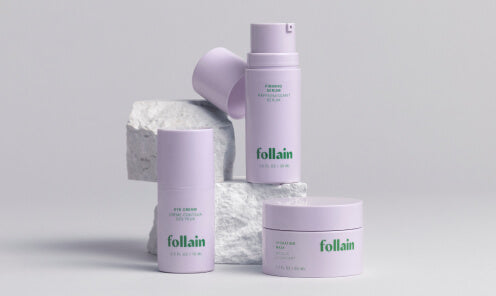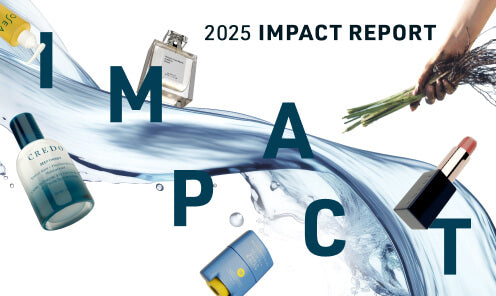By Mia Davis, Credo's Director of Environmental and Social Responsibility
By now you’ve probably heard that the US has a major consumption and waste problem.
Takeout containers, plastic shopping bags (which Credo never allowed), straws, disposable diapers, electronics that are designed to fail and be trash-- the list goes on. We are entrenched in an unsustainable cycle that is choking the planet.
Here are some sobering statistics:
• Over 300 million tons of plastic are produced every year (globally),
• Packaging is the largest end-use market segment accounting for about 40% of plastic usage
• An estimated 120 billion cosmetics packages are created annually, and the vast majority of beauty packaging is not reused or recycled in the US

Credo knew that the beauty industry’s carbon footprint, resource consumption, and waste was substantial. But when we began to research how much and which types of packaging are actually recycled, we were horrified.
- First, less than 50% of Americans have access to municipal recycling programs, and those that do often don’t use it or don’t use the system correctly. Those who do throw clean, empty packaging into single-stream recycling bins probably hope that material will be turned into something else. But too often, it just isn’t.
- For plastics #3, 4, 6 and 7 (this is the number in the little triangle/chasing arrows symbol), most recycling facilities never actually recycled those materials. They were sorted at the recycled facility but then were landfilled, buried or incinerated, often in China, where the US shipped our “hard to recycle” plastics for years. In 2018, China stopped taking these materials and the thin veil over the already-broken recycling system was lifted.

In addition to the fact that most types of plastic aren’t recycled, there are other common barriers to recycling: tiny packages, flexible packages, packages with different material types (think pumps), dyes and decor… these factors (especially a combination of them) means it is highly unlikely the package will be recycled.
So, you might be thinking, the answer is glass. Glass is technically infinitely recyclable, but (and please, don’t shoot the messenger) the majority of glass isn’t recycled in the US either. The single stream recycling system is too contaminated and over-taxed, glass is too heavy to move around economically, and small, colored and broken glass is undesirable. (It is also important to consider the carbon footprint of glass, especially if it comes from overseas to the US to be filled and then shipped around again.)
THE RECYCLING SYSTEM IS BROKEN, BUT THE ANSWER IS NOT TO STOP RECYCLING.
We need to create the demand for post-consumer recycled (PCR) content in order to avoid producing more cheap, virgin petrochemical plastic, or new glass (when we already have plenty). And while some plant-based plastics and metals have great potential, there are usually trade-offs for those materials too.
There is no one silver bullet to get us to “sustainable packaging.” But one thing is super clear: we cannot stand by and pretend that packaging isn’t a huge problem, or that we can “wish-cycle” our way out of this mess.
So we created Credo’s Sustainable Packaging Guidelines. Together we can curb this harmful trajectory. We've created these new guidelines not only for Credo brand partners to comply with in our stores, but everywhere else they sell. We also hope that the Sustainable Packaging Guidelines serve as a beacon for other beauty brands and retailers—it is going to take the majority of us to turn this tide.
Take a look at the brands leading the way. We look forward to continuing to celebrate this change.
 Mia is the Director of Environmental and Social Responsibility at Credo. Her career began in the environmental health movement. In 2007, she co-led the Campaign for Safe Cosmetics. Davis was Head of Environment, Health and Safety at Beautycounter for 5 years, and she's now helping Credo brands and customers define and lead the "clean beauty" sector.
Mia is the Director of Environmental and Social Responsibility at Credo. Her career began in the environmental health movement. In 2007, she co-led the Campaign for Safe Cosmetics. Davis was Head of Environment, Health and Safety at Beautycounter for 5 years, and she's now helping Credo brands and customers define and lead the "clean beauty" sector.












